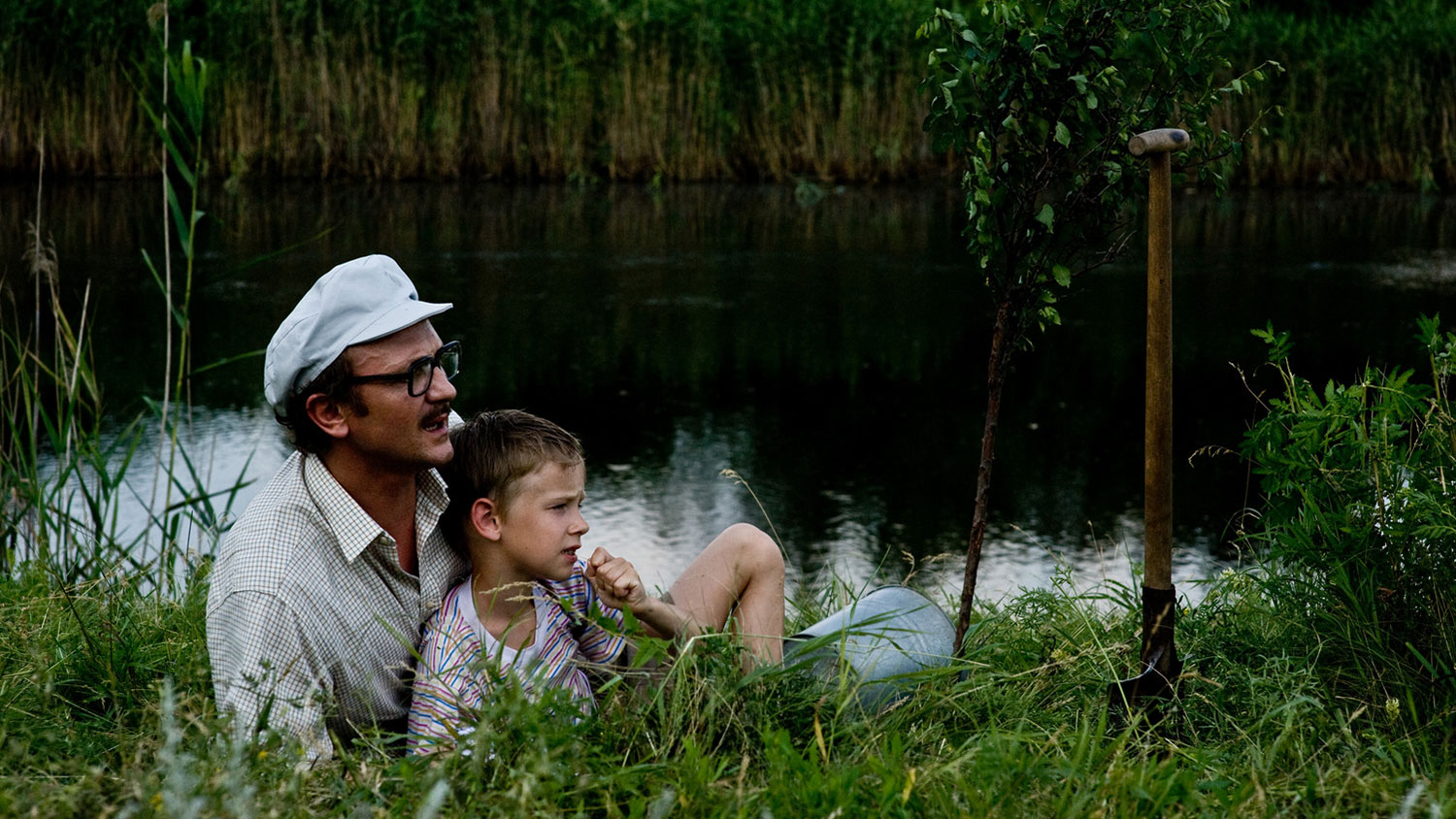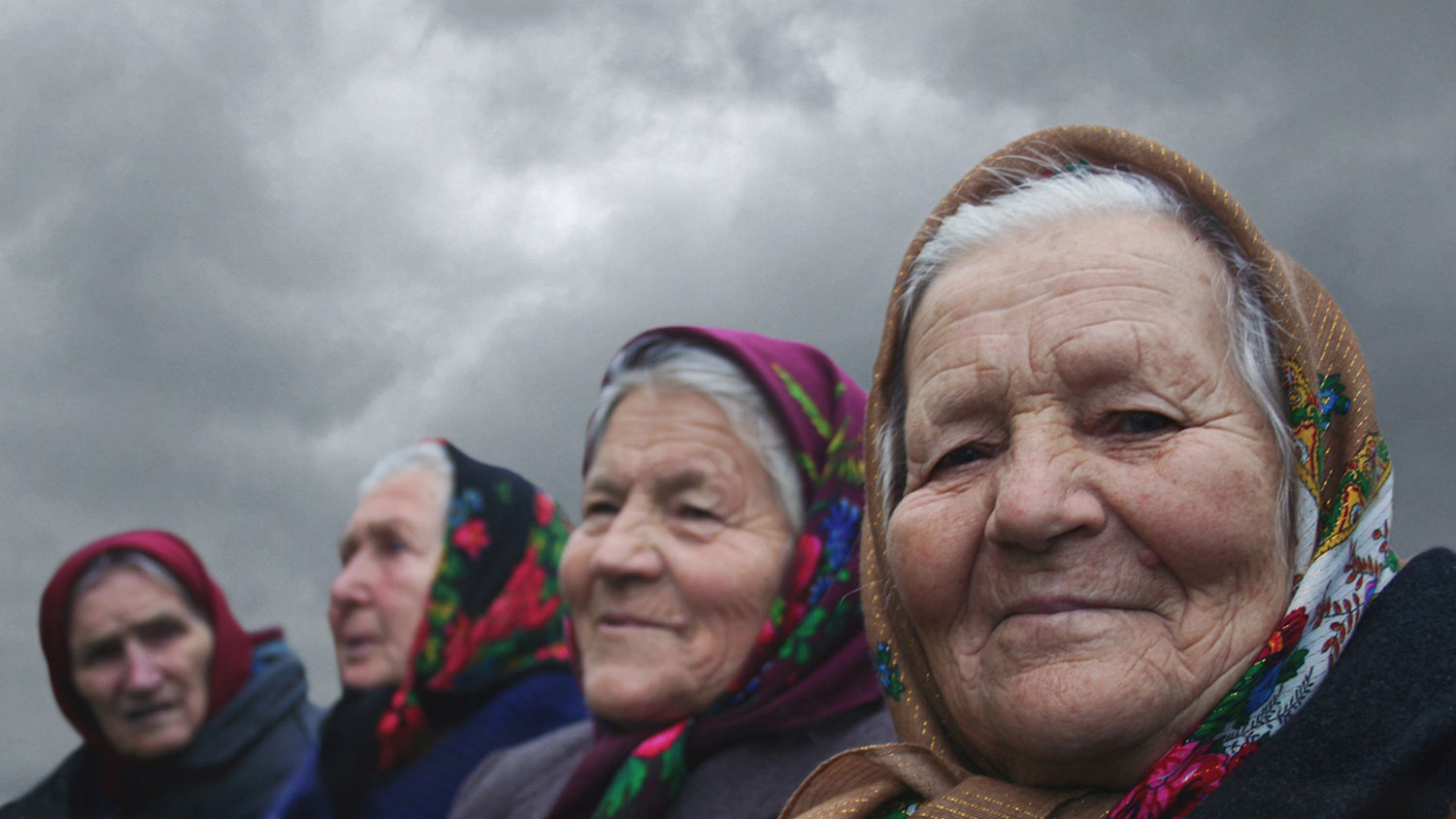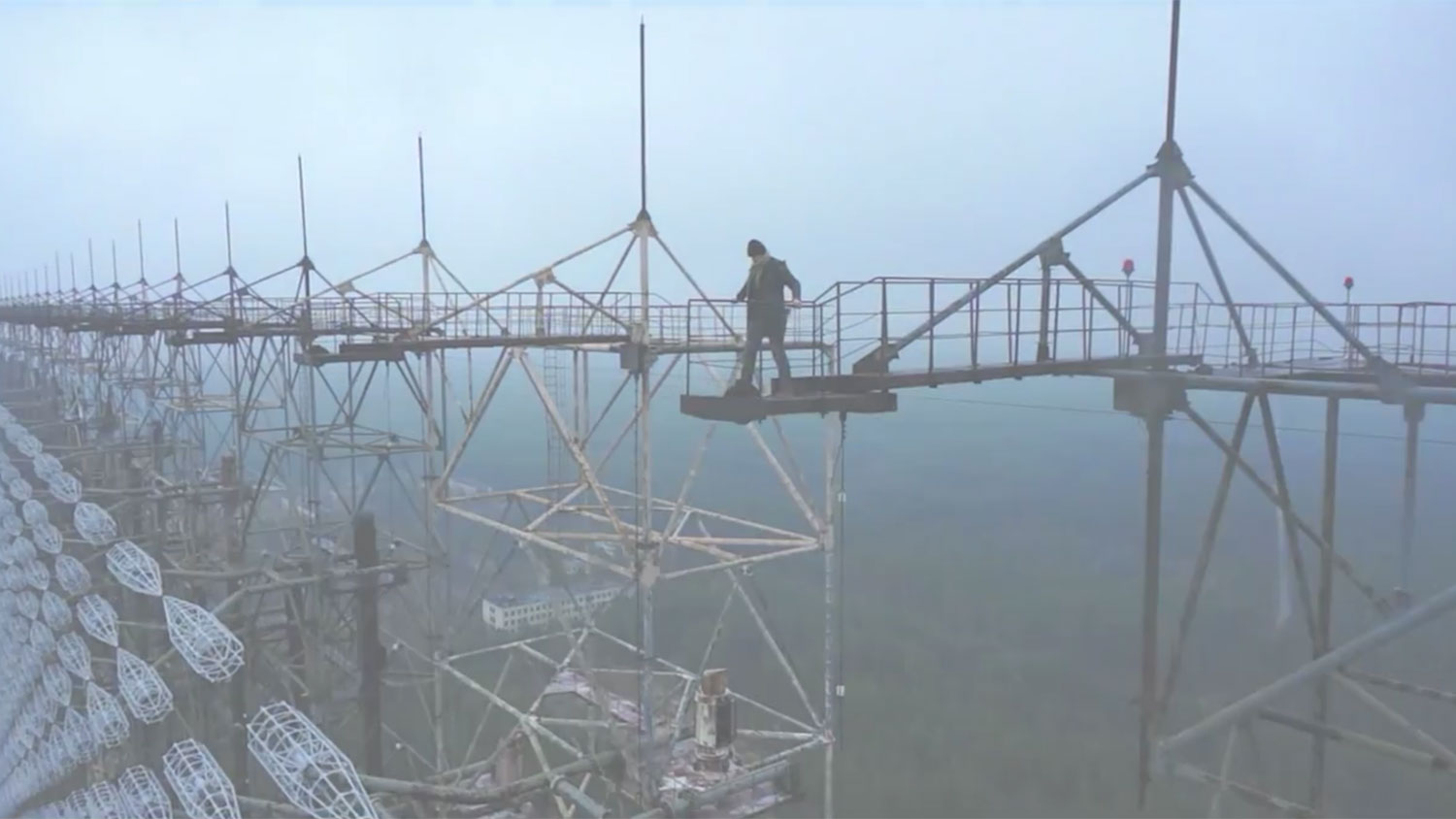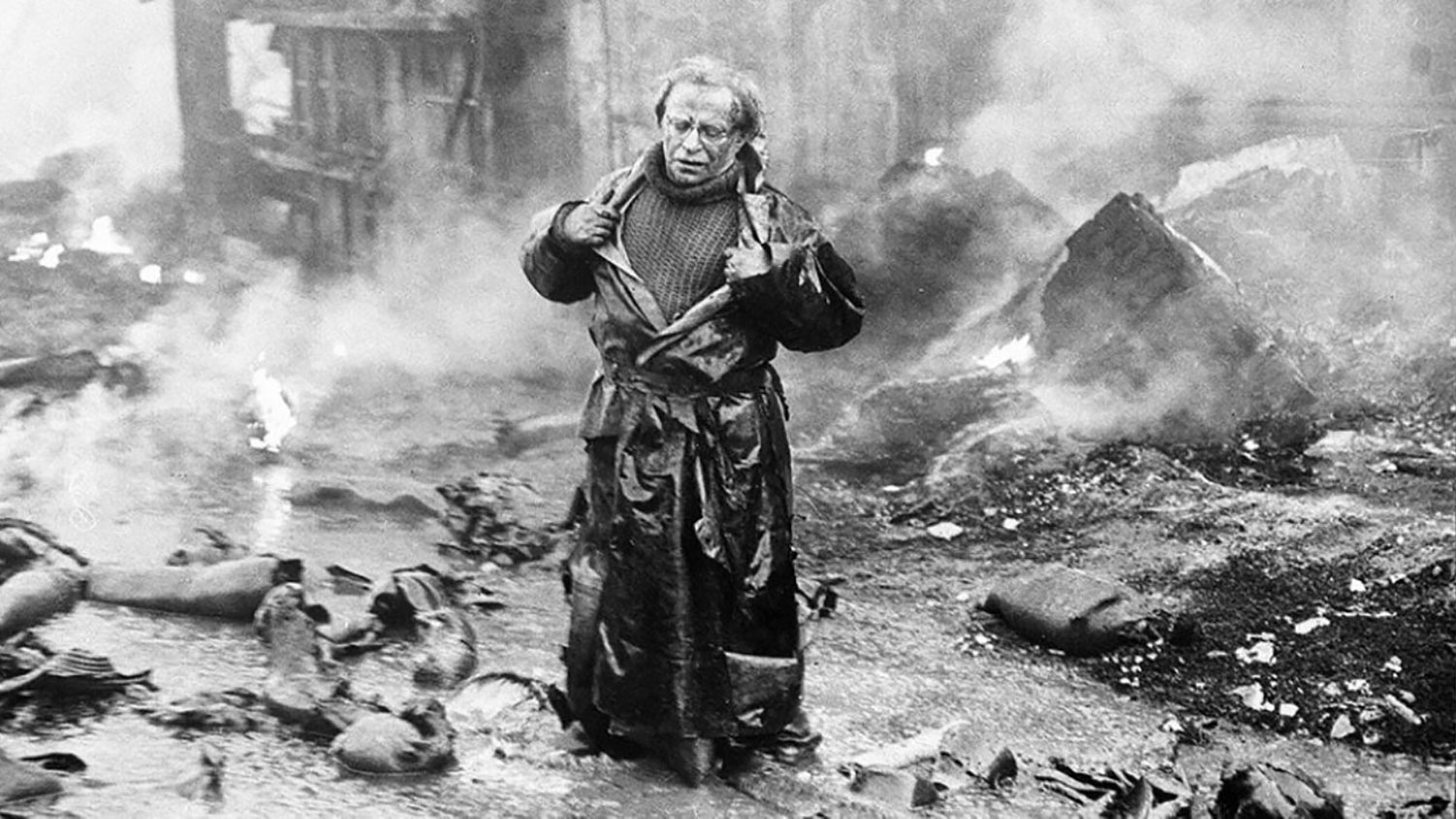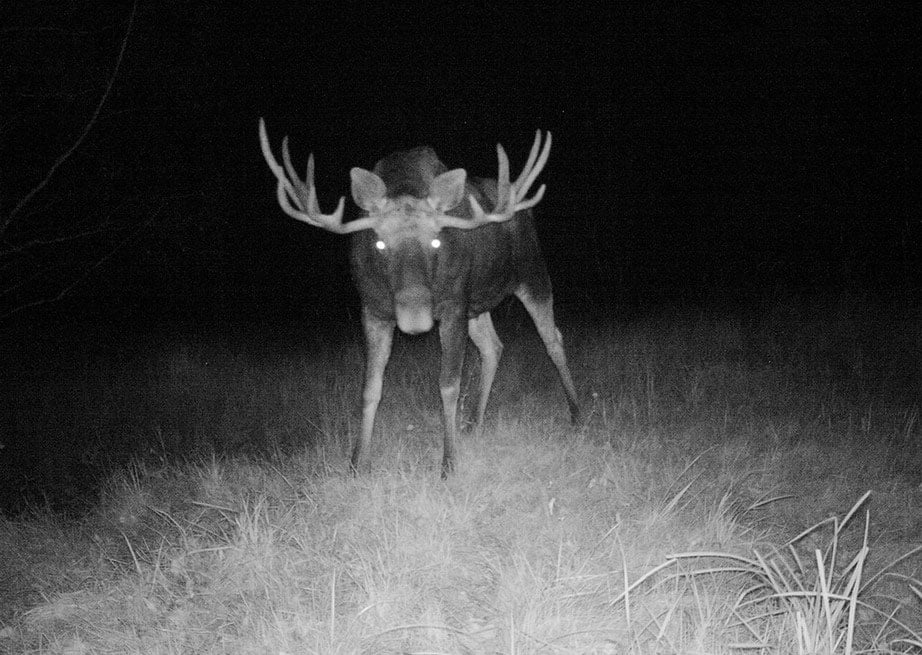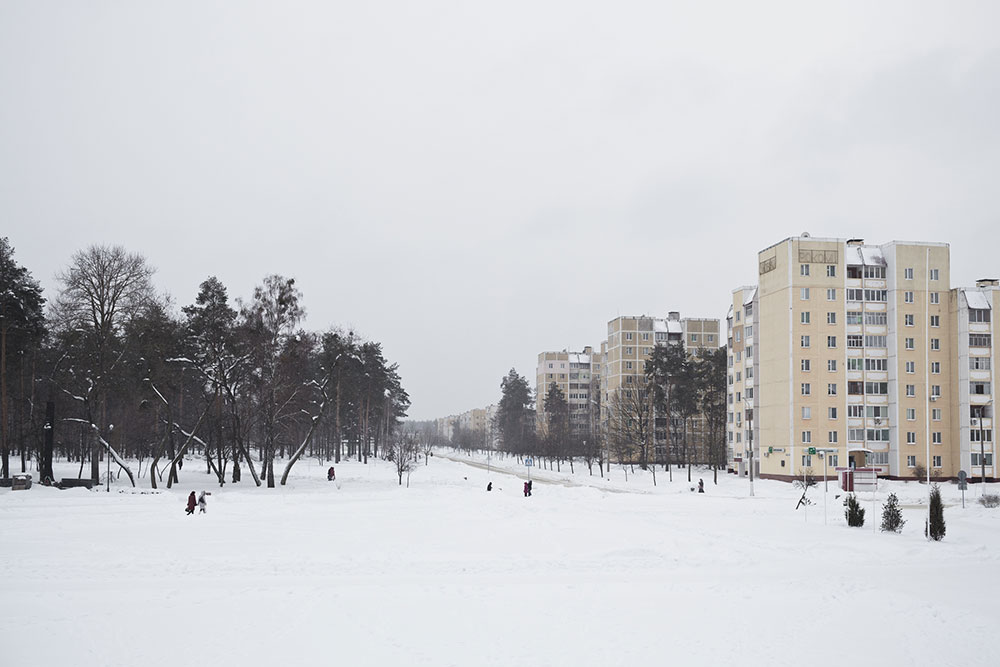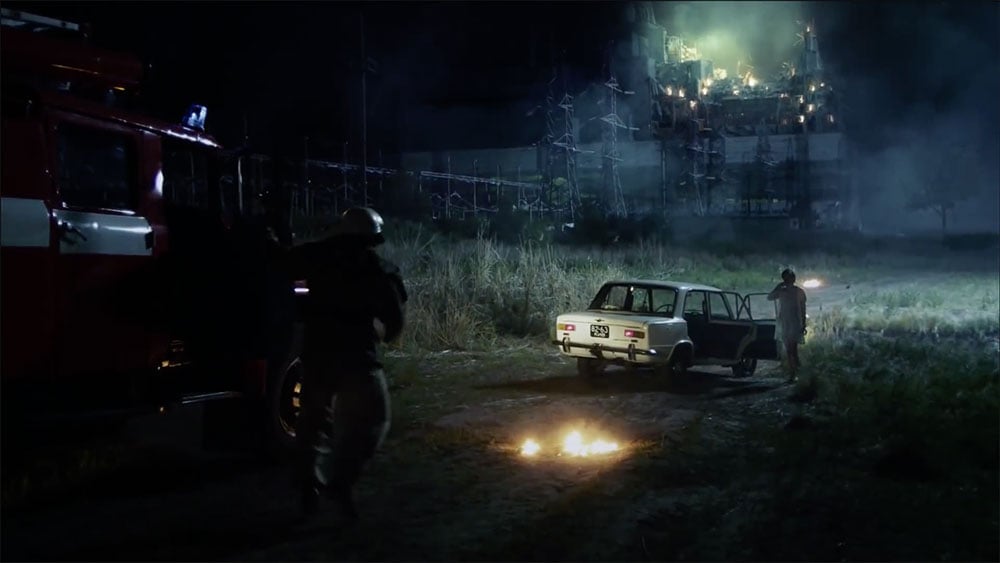In the zone: Ukrainian director Myroslav Slaboshpytskiy on filming inside Chernobyl
ChernobylAfter the success of The Tribe, Slaboshpytskiy returns to the Exclusion Zone
If the Fukushima Daiichi nuclear disaster from 11 March 2011 was instantly covered by world media, and people from all over the globe were able to witness the devastation, this was definitely not the case for Chernobyl thirty years ago. With Soviet leaders first refusing to acknowledge that such an accident was even possible, only after the USSR’s split and the painful birth of Ukraine’s political and economic independence was it possible to scale the damage. Furthermore, the second half of the 1990s brought portable digital equipment and the internet, allowing many journalists and filmmakers to shoot in the Chernobyl Exclusion Zone, and spread the portrait of tangible death.
One of those people was Myroslav Slaboshpytskiy, who worked as a TV reporter and scriptwriter at the time, and is known today for his arthouse success The Tribe (2014). When I call him on 11 March, coincidentally the fifth anniversary of the Fukushima Daiichi, he has returned from yet another of his trips to Chernobyl. So, what had attracted him to the Zone in the first place? “I feel something very special when I go there. It looks like a very mystical place. I even went inside the sarcophagus — it was very dangerous, of course, we were completely drunk.” Then he adds, “You know it is a dangerous place, but you feel free, you can do anything inside.”
Based on his experience in the 1990s, Slaboshpytskiy wrote The Chernobyl Robinson and won the all-Ukrainian script contest called Coronation of the Word in 2000. Although he was refused funding for this project, it spurred him to shoot a film in the Zone. “I always knew that I must make a film inside the Chernobyl Exclusion Zone,” states Slaboshpytskiy. Next he did Nuclear Waste (2012), a 24-minute festival darling, with which he took home the Silver Leopard at Locarno Film Festival. Shot on location with no dialogue and featuring two well-known professional Ukrainian actors, the film can be seen not only as a reflection of everyday routine inside the Chernobyl Exclusion Zone but also as a political metaphor for a traumatised, inured and doomed Ukraine. Sergiy and Sveta work, eat, have sex, then repeat the cycle over again — their environment is nuclear waste, just like their bodies and existence. Slaboshpytskiy recalls: “When I returned in 2012, the Zone had changed, it was not as dangerous as in the 1990s, but a lot of places looked completely dead.”
Characterised by murky yellowish imagery, absurdist humour, and Christian symbolism, the film gazes into the dawn of human civilisation
We talk as well about the current state of things in Chernobyl and Slaboshpytskiy explicates how generations have changed there. As the New Safe Confinement (an international project aiming to replace the original shelter built by Chernobyl liquidators) is almost ready, those who were working at Chernobyl for many years, two weeks inside the Zone and two weeks outside, juggling different jobs, have no idea what the future holds for them. Slaboshpytskiy’s upcoming feature, Luxembourg, is dedicated precisely to these people. “It’s a cliche,” clarifies the director about the title. “When you take a tour of Chernobyl’s Exclusion Zone, they always tell you that the Zone’s territory is the same size as Luxembourg’s.” The script is based on a number of sad and funny stories Slaboshpytskiy collected over the years at the Zone. Will Luxembourg be an extended version of Nuclear Waste? “Well, I think a certain feeling will be there, possibly. Of course, it is a different story, a different film.”
Our conversation remains on the topic of the Chernobyl canon in Soviet and Ukrainian film. Naturally, Tarkovsky’s Stalker (1979) is a major influence, not only in post-Soviet cinema but also the post-apocalyptic genre in general, which includes video games. Loosely based on the novel Roadside Picnic (1971) by the Strugatsky brothers, in which an alien civilisation visits the Earth briefly solely to leave radioactive waste, the film introduces the Zone as a territory of self-discovery, mysticism, and metaphysics. Those who trespass in the Chernobyl Exclusion Zone to collect memorabilia, to loot abandoned houses, or pick iron from the remains, are also called Stalkers. Slaboshpytskiy admits: “I love Stalker very much. I saw it several times before starting to work on my film. Personally, it is my favourite film of Tarkovsky’s.” In 1986, after the Chernobyl accident, many considered Stalker a work of prophecy, and in this context Tarkovsky’s homage to Akira Kurosawa took on a whole different meaning.
Chernobyl and the particular dimensions of this national tragedy remain a centrepiece in post-1989 Ukrainian cinema
From there, our discussion moves onto Ukraine-born director Konstantin Lopushanskiy, Tarkovky’s assistant director for Stalker who chose nuclear holocaust as the subject for his feature debut Dead Man’s Letters (1986). Told from the point of view of an ageing physics professor (starring renowned, also Ukraine-born, actor Rolan Bykov) who witnesses the accident and spends the next days trying to grasp what is happening while searching for his son, Dead Man’s Letters explores the potential of a worldwide nuclear disaster. Characterised by murky yellowish imagery, absurdist humour, and Christian symbolism, the film gazes into the dawn of human civilisation, with all the philosophical implications that derive from the last choices one is given in life. “It is a great film, unfortunately I saw it long ago,” comments Slaboshpytskiy, who had a chance to meet Lopushanskiy in St Petersburg while he was living there. Lopushanskiy pursued his eschatological visions further with an adaptation of the Strugatskys’ The Ugly Swans (2006), to which he introduced the appearance of mutant superheroes, interpreted in the traditions of Western comic books, as well as post-WWII manga.
Myroslav Slaboshpytskiy
Chernobyl and the particular dimensions of this national tragedy, however, remain a centrepiece in post-1989 Ukrainian cinema. Slaboshpytskiy is very much familiar with the context in which his Luxembourg will appear: “I saw a number of different films on the subject, like Mikhail Belikov’s Decay (1990), Michale Boganim’s Land of Oblivion (2011)... I know at least seven feature films about Chernobyl.” Then there are also several recent documentaries, shot mostly by US filmmakers on a very low budget that are enjoying plenty of attention on the festival circuit. The crowd-funded The Babushkas of Chernobyl by Holly Morris and Anne Bogart centres on the rebellious women who refuse to abandon their houses in the Zone, while Chad Gracia’s Sundance champ The Russian Woodpecker follows Fedor Alexandrovich, a famous Ukrainian artist and activist, on his quest to discover the truth about the nuclear catastrophe.
Slaboshpytskiy makes fun of the fact that Ukraine ranks high in digital piracy reports, though no one has uploaded The Babushkas of Chernobyl on a torrent website yet, and goes on to say: “I know the guys who made The Russian Woodpecker, including Fedor — they are great. I love the film, Fedor is completely crazy, but I mean crazy in the good sense.” The Russian Woodpecker raises the possibility that the Chernobyl disaster was triggered by a high-ranked Party official in order to cover up the failure of costly military radar close by. Just when I am about to inquire about his opinion on the matter, Slaboshpytskiy continues: “When I was in New York, people were asking me: ‘What do you think, is it true, this story in The Russian Woodpecker?’ ‘I don’t think so,’ I told them, and joked ‘I think it is a crazy conspiracy theory, but this is not important, if it works for you, that’s great.’’’
“Many people outside of the USSR did not know that Chernobyl was in Ukraine”
I share my interpretation that The Russian Woodpecker is Alexandrovich’s psychodramatic way of overcoming his childhood shock from the disaster as well as the separation from his parents, to become the person he wants to be — an artist, a father, an Ukrainian citizen. I ask Slaboshpytskiy about his own motivation to dedicate so many years to a Chernobyl-set feature project. “There is this theory, which I subscribe to, that Chernobyl was the beginning of the modern Ukrainian state. I mean, many people outside of the USSR did not know that Chernobyl was in Ukraine, except for some specialists. Actually, last year someone very famous in Hollywood asked me whether Chernobyl is in Russia or in Ukraine, but… yeah. [laughs] Still, I am shooting for other reasons, I am shooting just out of this mystic feeling which I mentioned.”
All this considered, it seems like now would be the perfect time for Luxembourg’s premiere, especially given that it was only recently tipped as a front-runner for this year’s Cannes Film Festival. Yet Slaboshpytskiy divulges that the production is still in a very early phase: “Maybe next year,” he pauses, “I want to work like Alexei German, he shot his film for seven years. Just don’t tell my producer…”
